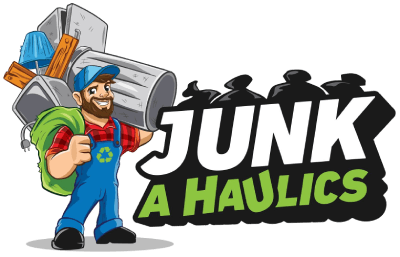DIY Deck Removal: How to Do It Right
Are you facing the daunting task of removing an old deck? Whether it’s due to wear and tear, a desire for a new design, or simply reclaiming space in your backyard, tackling deck removal can seem overwhelming at first glance. However, with the right approach and a bit of preparation, you can effectively dismantle your deck without unnecessary stress or damage to your property. In this guide, “DIY Deck Removal: How to Do It Right,” we’ll walk you through the essential steps and considerations for a successful project. From initial planning and gathering the necessary tools to safely disassembling the structure and handling debris, each stage will be covered in detail. By the end, you’ll feel equipped to take on this project confidently, ensuring a smooth process and preparing you for what lies ahead in transforming your outdoor space. Whether you’re a seasoned DIY enthusiast or new to home improvement projects, this guide aims to simplify the process and empower you to achieve professional results on your own terms.
Tools and Equipment Needed for DIY Deck Removal
Removing a deck yourself can be a rewarding project that saves money and provides a sense of accomplishment. However, before you begin, it’s essential to gather the right tools and equipment to ensure the job is done safely and efficiently. Here’s a comprehensive list of eight essential tools and equipment you’ll need for DIY deck removal:
Safety Gear
When embarking on any demolition project, prioritizing safety is paramount to protect yourself from potential hazards. Equip yourself with sturdy work gloves to shield your hands from sharp edges and debris. Safety goggles are essential to safeguard your eyes against flying particles, while a dust mask or respirator will protect your lungs from harmful dust and debris inhalation. Additionally, ear protection is crucial to prevent hearing damage due to loud noises generated during demolition. Ensuring these safety measures are in place not only enhances personal safety but also contributes to a more efficient and controlled demolition process.

Demolition Hammer or Reciprocating Saw
Depending on the size and complexity of your deck, utilizing specialized tools like a demolition hammer or reciprocating saw (commonly known as a sawzall) can greatly expedite the process of dismantling tough materials such as beams and posts. A demolition hammer is effective for breaking through concrete, while a reciprocating saw with the appropriate blades can swiftly cut through wood and metal components. These tools not only make quick work of breaking down the deck structure but also allow for precise and controlled removal of individual pieces, facilitating a more efficient demolition process overall.
Pry Bars and Crowbars
Pry bars and crowbars are essential tools for effectively removing deck boards, railing components, and fasteners during a demolition project. Their primary function is to provide leverage, allowing you to pry up nailed or screwed-down boards without causing damage to surrounding materials. Pry bars, with their flat, wedge-shaped ends, are particularly useful for lifting deck boards and separating them from the underlying joists or beams. Crowbars, with their curved ends and greater leverage, can tackle heavier tasks such as removing stubborn fasteners or dismantling larger structural components like railing posts.
Circular Saw or Jigsaw
When tackling the removal of decking boards and trim pieces during a demolition project, a circular saw or jigsaw proves invaluable. These tools are essential for cutting through wood or composite materials swiftly and precisely. A circular saw, equipped with a suitable blade for wood or composite, offers efficient cutting along straight lines, making it ideal for large sections of decking. On the other hand, a jigsaw provides more flexibility and maneuverability, allowing for curved cuts or intricate shapes in trim pieces or decking boards. Both tools enable controlled and accurate cuts, ensuring that sections of the deck can be removed cleanly without damaging adjacent structures.
Sledgehammer
A sledgehammer is an indispensable tool for demolishing large sections of a deck, especially when dealing with heavy framing or concrete footings. Its weight and blunt force make it highly effective for tasks that require breaking apart or dislodging stubborn materials. When used with controlled and deliberate swings, a sledgehammer can fracture and dismantle structural elements such as posts, beams, and concrete footings, facilitating the removal process. It’s crucial to exercise caution and wear appropriate safety gear, including gloves and eye protection, to prevent injuries from flying debris or rebounding strikes.
Environmental Considerations in Deck Demolition
When embarking on a DIY deck demolition project, it’s important to consider the environmental impact of your actions. Responsible handling of materials not only minimizes waste but also contributes positively to sustainability efforts. Here’s a comprehensive guide to environmental considerations in deck demolition:
Assessment of Materials
Before beginning any demolition work on your deck, it’s essential to conduct a thorough assessment of the materials used, particularly to identify any hazardous substances that may require special handling or disposal procedures. One significant concern is treated wood, often pressure-treated with chemicals like arsenic, chromium, or copper compounds to resist decay and insects. These chemicals can pose health risks if not handled properly during demolition and disposal
Recycling Opportunities
When demolishing an old deck, many of its components can indeed be recycled, contributing to sustainability and reducing waste. Wood from decking boards, posts, and beams can often be reused in other projects if in good condition, or recycled into wood chips or mulch for landscaping purposes. This not only extends the life cycle of the material but also reduces the demand for new resources.
Proper Disposal of Hazardous Materials
If your deck includes treated wood or other hazardous materials, ensure they are disposed of properly. Contact your local waste management facility for guidance on how to dispose of these materials safely and in compliance with environmental regulations.
Minimizing Waste
When planning your demolition process for a deck or any structure, it’s crucial to prioritize waste minimization through thoughtful salvage and recycling practices. Begin by assessing the condition of materials such as wood, metal hardware, and concrete footings. Salvage components that are still in good condition for potential reuse in future projects or donation to community organizations. This not only reduces waste but also extends the life cycle of materials, contributing to environmental sustainability.
Reuse of Salvaged Materials
Consider ways to reuse salvaged materials from your old deck. For example, old decking boards can be repurposed for new projects like raised garden beds or outdoor furniture.
Aftercare: Preparing Your Yard for a New Deck or Landscape
After removing an old deck, proper aftercare is crucial to prepare your yard for its next phase. Here are some important steps to take:
- Clean Up Thoroughly: Remove any debris left from demolition, including nails and screws. Sweep the area clean or use a shop vacuum for smaller particles.
- Inspect and Repair: Check the underlying structure and foundation for any damage or deterioration. Repair or reinforce as necessary before proceeding.
- Level the Ground: Ensure the ground is level and compacted where the new deck or landscape will be installed. Use a tamper or roller to achieve a firm base.
- Consider Drainage: Plan for proper drainage to prevent water pooling. This may involve grading the area or installing drainage solutions like French drains.
Conclusion
Removing a deck can be a challenging yet rewarding DIY project, offering opportunities to enhance your outdoor space or prepare for a new construction project. By following the steps outlined in this guide, you can ensure the process is safe, efficient, and environmentally responsible. Remember to prioritize safety throughout, use proper tools and techniques, and consider recycling materials where possible to minimize waste.
If you’re considering deck removal but prefer to leave it to the professionals, JUNKAHAULICS in Raleigh is here to help. Our experienced team specializes in efficient and eco-friendly junk removal services, including deck demolition and disposal. Whether you need assistance with removing an old deck, clearing out construction debris, or any other junk hauling needs, give us a call at 919-478-4814. We offer reliable service and competitive pricing, ensuring your project is handled with care and expertise. Visit our website or contact us today to discuss how we can assist you with your next project.




